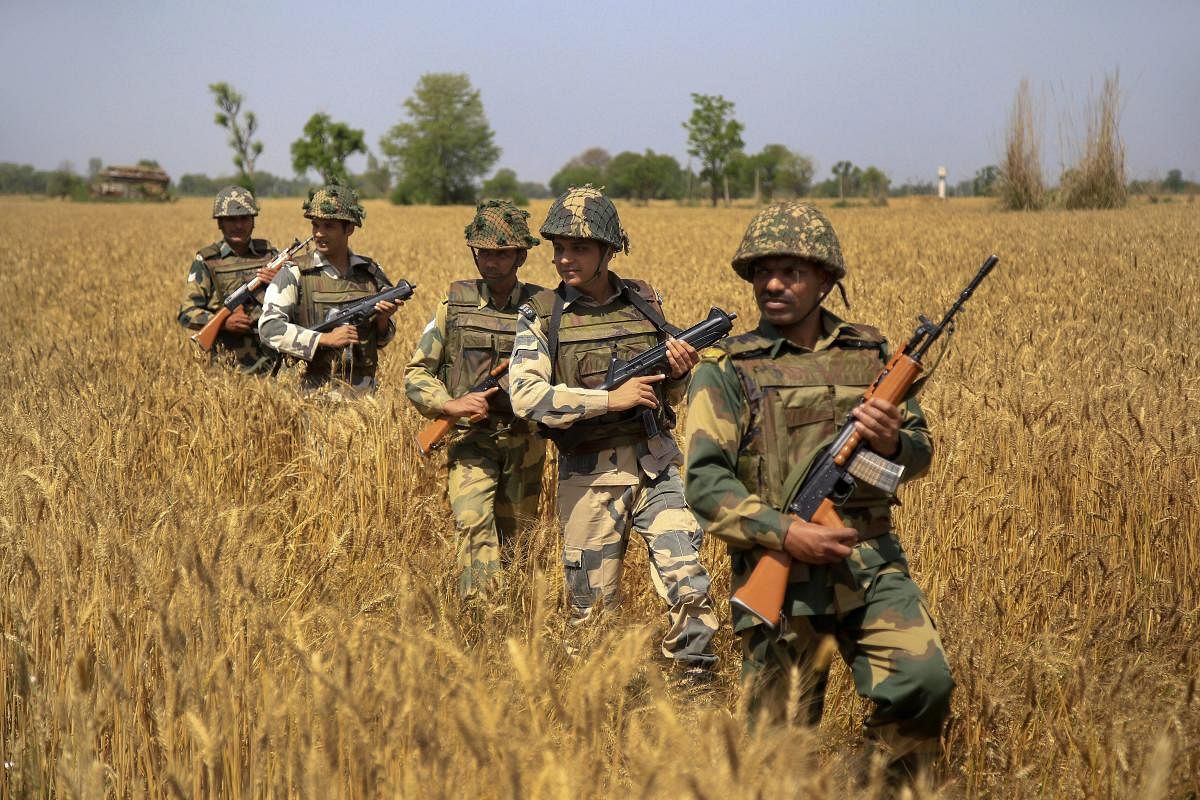
As India and Pakistan hurl accusations at each other over Kashmir, they should spare some invective for those who laid the foundation of this mess in the first place. Like so many other territorial disputes the world over, the roots of this conflict lie deep in the history of the region. The real culprits have long departed the scene and those holding the can today are suffering the consequences of their machinations.
Nearly a century ago, concern about arbitrary transfers of territories across the world was voiced by H G Wells in his magnum opus,The Outline of History. He wrote about how, generally, the more powerful nations treated the weaker ones as commodities to be randomly traded, unmindful of the wishes of the people living there. “Areas of government are not matters for the bargaining and interplay of tsars and kings and foreign offices,” he said. Whenever that happened, seeds of future turmoil were sown, and we are having to pay the price of such imperialist hauteur today.
The defining event in the case of Jammu and Kashmir was not so much the partition of the country in 1947 as the victory of the British over the Sikhs in the last war they fought in the mid-19th century. In 1819, Sikh ruler Ranjit Singh had annexed Kashmir. His successors were not a patch on him and after they lost in 1846, the British demanded a hefty war indemnity. They could not pay this, so the Raja of Jammu, Gulab Singh, picked up the tab on their behalf in exchange for sovereignty over the entire Kashmir region. British historian Robert Thorpe says of this transaction: “towards the people of Cashmeer, we have committed a wanton outrage, a gross injustice, an act of tyrannical oppression which violates every human and honourable sentiment, which is opposed to the whole spirit of modern civilization.”
For a sum of Rs 75 lakh, the area between the Indus and Beas rivers was transferred lock, stock and people to the domain of the Jammu ruler. A few years later, his son Ranbir Singh added Humza, Gilgit and Nagar to his territory.
Hence, as a deal between an imperialist power and a local Raja propped up by them, predominantly Hindu Jammu, Buddhist Ladakh, Sunni (but with a Sufi slant) Kashmir, strictly Sunni areas of Poonch (POK), Shia Gilgit and also Shia (but ethnically close to Ladakh) Baltistan, all forcibly became a part of one state. At some point, when the people inhabiting these regions would get a right to choose for themselves, this incoherent, unnatural union was bound to come under a severe strain.
Even the break up, when it came, could have been handled with more finesse than what the sub-continent went through in 1947-48. When Pakistan sent raiders in October 1947 to forcibly annex Kashmir, they displayed the same wanton disregard for people’s wishes as the former rulers had done.
So, we now have a situation where Pakistan-occupied Kashmir (POK) seems doomed to stay under Pakistani domination because the ceasefire of 1948 sanctified the status quo of that moment. And in our part, we have the two principle regions –- Jammu and Kashmir –- so diametrically different from each other that the original idea of bringing them under one state
administration seems to have been the kind of fiasco that Wells was referring to.
One is a largely Hindu area, the other Muslim; one speaks Dogri/Hindi, the other Kashmiri/Urdu; national parties dominate the politics in one region, they are wiped out in the other; and while one records up to 80% turnout in municipal elections, the other notches a measly 5%, with one booth recording just a single vote! And the Ladakhis can only wonder how and why they ever got into this muddle.
Having invested heavily in the last seven decades in terms of the blood of their soldiers and money, the two warring countries –- India and Pakistan -– now find it difficult to get out of this predicament. The thought that is worth pondering over is: If 170 years ago, all regions had not been forcibly amalgamated and had been allowed to go their own ways, then we would not have been in the kind of quandary that we find ourselves in today.
Jammu and Kashmir is not the only instance of arbitrary transfers of territory and peoples inhabiting it for which we are paying a heavy price today. The Palestinian problem, where an entire nation was forced to vacate their lands and homes for another, is the root cause of the deadliest and longest conflict in modern history.
The ethnic cleansing of Crimea, its forcible annexation, its subsequent liberation and then another attempt to re-annex it by Russia; or, the way Balkan states were forcibly conjoined after the Second World War, are other instances of big power impudence that led the region to a bitter and violent conflict.
Throughout known history, the more powerful nations changed borders arbitrarily and that sowed the seeds of future conflicts. Ralph Peters, in a paper published in the US Armed Forces Journal in 2006, said: “International borders are never completely just. But the degree of injustice they inflict upon those whom frontiers force together or separate makes an enormous difference –- often the difference between freedom and oppression, tolerance and atrocity, the rule of law and terrorism, or even peace and war.”
Brutal oppression was required to keep unwilling masses under subjugation even when consciousness of separate ethnic identities was not as acute as it is today.
With the rise in awareness of democratic rights, this is becoming increasingly difficult. So, conflict is inevitable. We are destined today to pay the price for sins committed in the past.